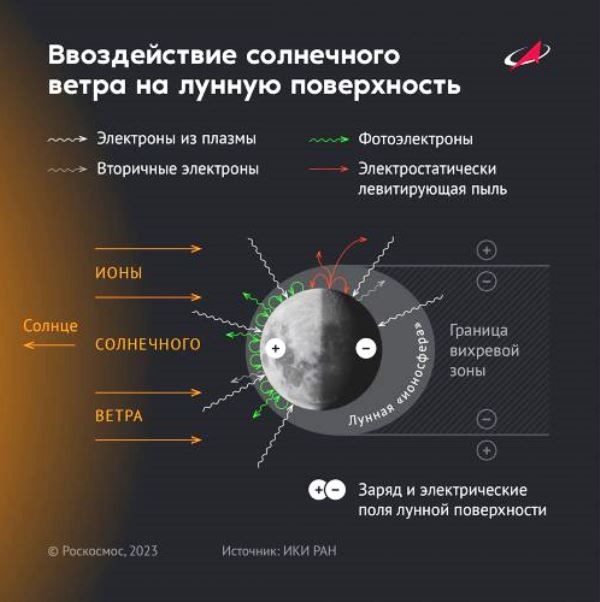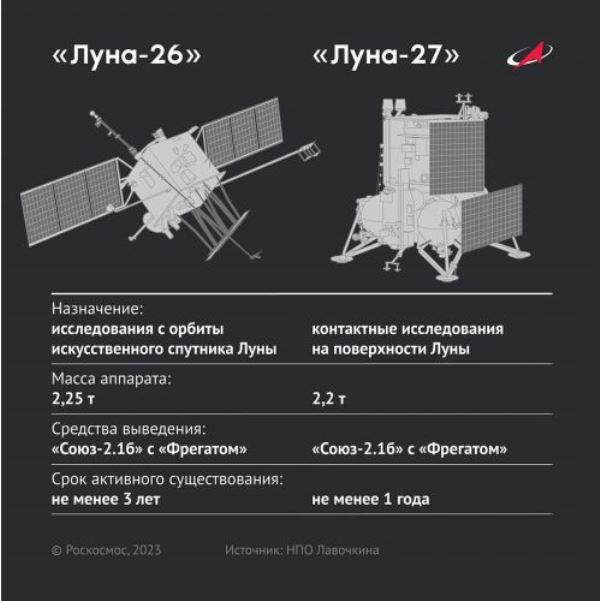In August 2023, from the Vostochny cosmodrome, the Soyuz-2.1b carrier rocket with the Fregat upper stage is planned to launch the first Luna-25 automatic station in the modern history of Russia to a natural satellite of the Earth. She will have to make a soft landing in the vicinity of the South Pole of the Moon to study the lunar regolith and exosphere.
The press service of the Space Research Institute of the Russian Academy of Sciences asked questions about the background of the Luna-25 mission and its main goal to the scientific director of the Institute and the scientific director of the first stage (research by automatic stations) of the Russian lunar program, Academician of the Russian Academy of Sciences Lev Zeleny.
— Lev Matveyevich, please tell us how the Luna-25 mission "historically developed"? Why are we going there at all?
— One of the reasons for today's "excitement" around the Moon is the possible extraction of lunar resources, primarily rare earth metals associated with metallic meteorites that collided with the Moon during its evolution. And secondly, the reserves of water ice at the poles. And here the data of the Russian scientific instrument LAND played a key role.
In general, there were quite a lot of experiments that were aimed at finding water on the moon. Probably, every scientific group that dealt with them considers itself the author of these discoveries, but, in any case, Russian scientists played a very big role in this discovery.
Thanks to the data of the LEND instrument, which has been operating near the Moon since 2009 (on board the NASA LRO orbital station — Ed.), we formulated the current concept of exploring the "polar Moon" back in 2010.
 |
| Roscosmos graphics. |
| Source: roscosmos.ru |
No one was talking about such a program then. At that time, the preparation of the Luna-Globe lunar project was slow in Russia. This work was conducted by the Vernadsky Institute of Geochemistry and Analytical Chemistry of the Russian Academy of Sciences (GEOHI), and its task was to study the internal structure of the Moon using penetrators. Penetrators are shock probes that were supposed to penetrate the lunar soil at three or four points at high speed. It was planned that seismic sensors would be installed in the penetrators, which would transmit data to Earth through repeaters. As a result, it would be possible to obtain information about the size of the Moon's core, which is very important for understanding the history of its origin. In general, this would certainly be a very important experiment for fundamental science.
A small "lyrical digression". Actually, GEOHI has always been the leader of lunar exploration. At our ICI, the Moon did not attract much attention — the main ones were studies of the atmospheres and plasma environment of the planets.
But during the development of these stations, the question arose, who really can make these penetrators? It turned out that there were no such organizations in Russia in the 1990s. Japan was connected. Japanese penetrators even reached the tests, but it turned out that they are far from withstanding the shock load of 300-400 g, which occurs when colliding with the lunar surface. Then British specialists also unsuccessfully joined in, I even saw a special rail installation for testing such devices, but as a result, by the end of the noughties, work on the Luna-Globe project, unfortunately, reached a dead end.
But just at that time, we received data from our LAND neutron telescope, which, as a result of a tough competition, was installed on the American Lunar Reconnaissance Orbiter. Yes, before that there was data on the presence of water, thanks to the first Indian lunar mission Chandrayaan 1, but a more or less detailed map of the distribution of water ice was obtained by Russian specialists. Moreover, it has been shown that there is water not only in "cold traps" — permanently shaded places inside polar craters (which, in principle, is quite expected), but also outside them. Then it caused a lot of controversy, what processes can create such a distribution?
But as a result, we realized that, starting with the study of the Moon, we can also think about its future development — and the presence of water ice will have to play a key role here. We then very promptly proposed a new lunar program — the polar Moon research program, received the support of the country's leadership and, approximately in 2011-2012, began work on it.
From the academic study of the structure of the Moon in the interests of, as they say, fundamental science, they moved on to the practical study of lunar water reserves.
Then the flight of the station was planned for about 2016-2017. I did not like this index "Globe" — "coffin" — and I am proud that I came up with a numbering option that continues the Soviet series of stations for studying our natural satellite. The station became known as Luna-25, although by inertia in contracts it is still called Luna-Globe.
"Luna-25" is planned to be the first device in the new series. The development of the following devices has already been carried out within the framework of the Luna-Resource program. Luna-26 is an artificial satellite of the Moon, Luna—27 is a more complex landing station with a drilling rig. Luna-28 should deliver the soil, but not like the Soviet "Moons", but with the preservation of volatile components, including water ice. If we take a soil sample, as the Soviet "Moons" did, then the water, if it is there, will simply evaporate at zero ambient pressure on the Moon, and we will not understand whether it was there or not.
 |
| Roscosmos graphics. |
| Source: roscosmos.ru |
But I'll come back to the story again. Initially, Luna-25 was supposed to be launched together with the second Indian lunar vehicle Chandrayaan 2 on an Indian launch vehicle. There were many working meetings, but in the future the interaction somehow went wrong. Friendship was preserved, but everyone went their own way.
Chandrayaan 2 was launched in 2019. Unfortunately, the lander crashed during the lunar landing, but the orbiter successfully flies and works quite well.
And over the years, the concept of the "polar Moon" has become universal, and now, I will say, a whole horde, not even an armada, of spacecraft should fly there. The Americans have signed a contract with fourteen different companies for the delivery of landing stations to the Moon, and this program is also beginning to be implemented. More recently, in mid-July, the Indian lunar lander Chandrayaan 3 was launched with the same tasks, its landing is scheduled for August 22.
But I hope that we will be the first to land in the near-polar region and conduct the first direct experiments to study and search for water. This will be the basis from which everyone will start later.
So the successful flight of Luna-25 will mean a lot, and is important not only for pure fundamental science.

